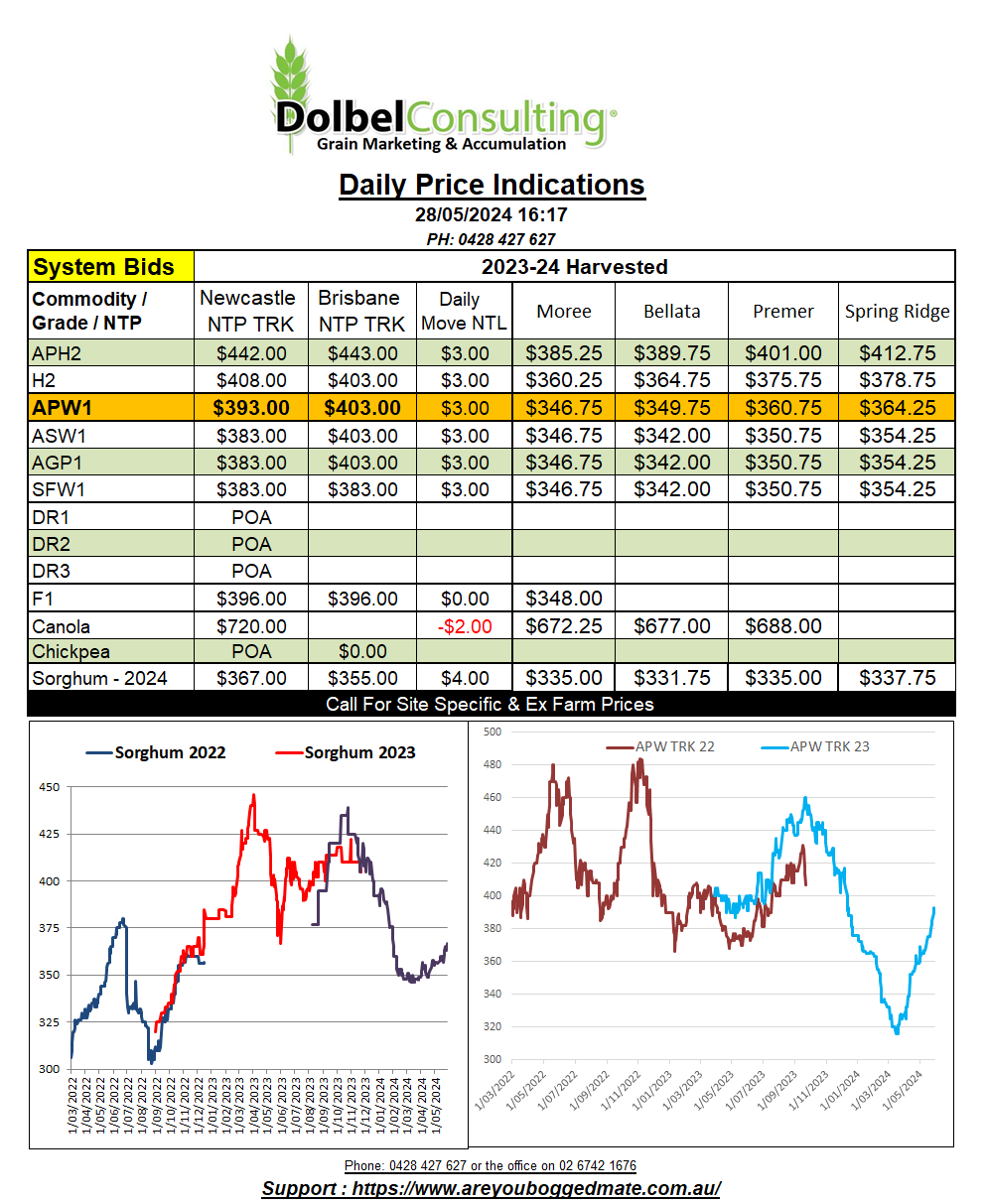28/5/24 Prices

The US had a day off last night, so no Monday trade to report this morning from there. At Paris, milling wheat was sharply higher, the nearby futures contract closing up E7.75, the Dec24 slot was also higher, closing +E7.50. The upward momentum carried across to corn futures there but was not reflected in rapeseed futures, which suffered a setback, shedding E1.50 on the nearby.
The strength in Paris milling wheat is said to be predominately about the expectations of a smaller Russian crop. Some punters are now calling it a sub 80mt crop. Keep in mind as big a fall as this is from last years wheat crop, an 80mt crop is not a small crop and will still see Russian wheat competing for export homes. Russian domestic consumption was estimated at 39.75mt and carry in was estimated at 11.44mt in the May WASDE. Even if we were to halve the carry out and reduce exports for the difference between the current USDA production estimate of 88mt and an 80mt crop. Russian exports could still be as high as 48mt. That’s the same as the 2022-23 export estimate. By December 2022 Chicago futures were only 50c/bu (AUD$27.60) higher than where they are now, but the dynamics of 2022 were also much different than they are now. The Russian / Ukraine war is now more greatly understood ,and the impact is has on Black Sea exports is more clear. This doesn’t mean a political decision out of the blue isn’t possible, but the flow of grain is understood for now.
Not to take anything away from a possible 50c/bu rally, any reduction in Russian production remains bullish. The other factors at play, like a very wet EU, smaller Brazilian crop, drought in west Kansas and N.Africa and Chinese imports are all bullish. There is also talk of smaller acres than originally expected for Russian spring wheat crop too.
Rain is again in the forecast for much of Germany and the Alps for the week ahead. Showers along the east coast of Italy may also delay the start to an early harvest there. In the US rain is expected to fall across much of the Midwest and the HRWW belt. Potentially delaying summer crop sowing further.
